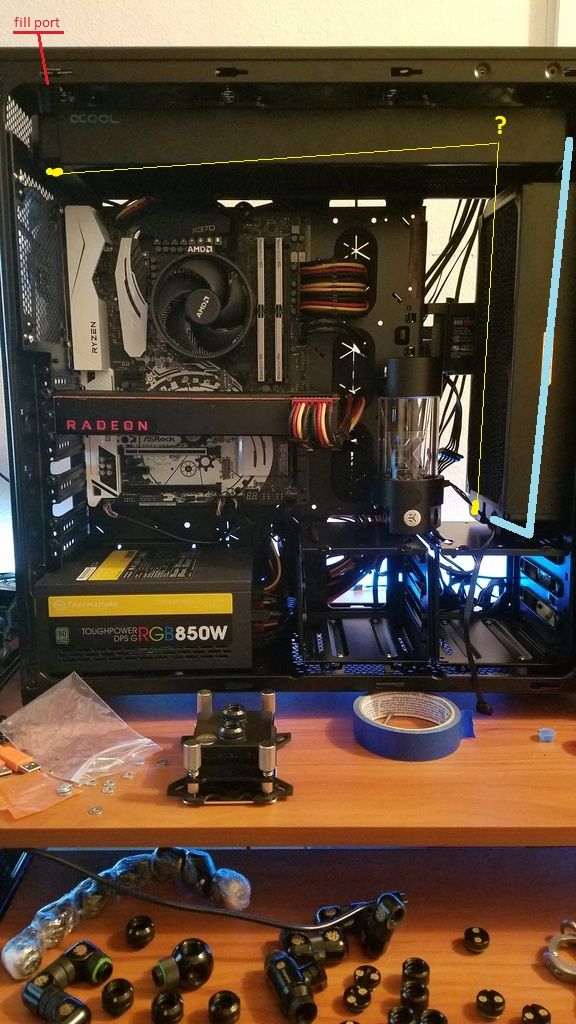Hey guys, I am working on my first custom loop and was hoping to get some input from you.
I am having trouble deciding which way I want the flow to go, as well as where to place my drain valve for easiest use in the future. I have to keep the 280 rad mounted the way it is, otherwise I can not get 3x 140's mounted on the front of my case. The res will sit higher because my D5 will be mounted on top of the drive cages where the res is currently sitting. GPU and CPU will be in the loop. Yellow spots are the open ports on my rads. Top rad is an alphacool xflow 420/45 and front rad is an alphacool uflow 280/60.
How would you route things? Any other input? Positive or negative lets hear it! (unless its about my ketchup and mustard. you keep your mouth shut about my PSU sleeving)

I am having trouble deciding which way I want the flow to go, as well as where to place my drain valve for easiest use in the future. I have to keep the 280 rad mounted the way it is, otherwise I can not get 3x 140's mounted on the front of my case. The res will sit higher because my D5 will be mounted on top of the drive cages where the res is currently sitting. GPU and CPU will be in the loop. Yellow spots are the open ports on my rads. Top rad is an alphacool xflow 420/45 and front rad is an alphacool uflow 280/60.
How would you route things? Any other input? Positive or negative lets hear it! (unless its about my ketchup and mustard. you keep your mouth shut about my PSU sleeving)

![[H]ard|Forum](/styles/hardforum/xenforo/logo_dark.png)
